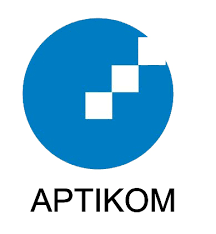Partial Adaptive Multi-Level Block Truncation Coding (Ambtc) Of Spinal X-Ray Image For Efficient Compression
DOI:
https://doi.org/10.18196/eist.v5i1.22409Keywords:
AMBTC, Lumbar Spine, RadiographicAbstract
This study aims to explore various adaptations of the AMBTC compression model applied to lumbar spine radiographic images, focusing on minimizing image size while preserving essential information. The approach involves adjusting several technical aspects of the AMBTC model, including the number of blocks, block size, and compression rate. The quality of the compressed images is assessed using image quality metrics such as PSNR (Peak Signal-to-Noise Ratio) and MSE (Mean Squared Error). The findings indicate that a modified AMBTC compression model can significantly enhance the quality of lumbar spine radiographic images, evidenced by increased PSNR values, while substantially reducing the file size without compromising crucial image detailsReferences
A. Gerard and B. Goldstein, Going visual: Using images to enhance productivity, decision-making and profits. John Wiley & Sons, 2005. Accessed: May 19, 2024. [Online]. Available: https://books.google.com/books?hl=id&lr=&id=zSXP2Bg0LEkC&oi=fnd&pg=PR3&dq=The+saying+%22a+picture+is+worth+a+thousand+words%22+underscores+the+notion+that+an+image+can+convey+more+information+than+text+could&ots=DvcfcgEhqi&sig=9VzB-toQYQBfER0GExalabo7aTU
M. Tang, S. Zeng, X. Chen, J. Hu, and Y. Du, “An adaptive image steganography using AMBTC compression and interpolation technique,” Optik, vol. 127, no. 1, pp. 471–477, 2016.
H. Chen, M. M. Rogalski, and J. N. Anker, “Advances in functional X-ray imaging techniques and contrast agents,” Phys. Chem. Chem. Phys., vol. 14, no. 39, pp. 13469–13486, 2012.
W. Hong, D. Li, D.-C. Lou, X. Zhou, and C.-H. Chang, “A bit toggling approach for AMBTC tamper detection scheme with high image fidelity,” PloS One, vol. 15, no. 4, p. e0230997, 2020.
K. Somasundaram and S. Vimala, “Multi-Level Coding Efficiency with Improved Quality for Image Compression based on AMBTC.” arXiv, Apr. 07, 2012. Accessed: May 19, 2024. [Online]. Available: http://arxiv.org/abs/1204.1704
I. M. Spiliotis and B. G. Mertzios, “Real-time computation of two-dimensional moments on binary images using image block representation,” IEEE Trans. Image Process., vol. 7, no. 11, pp. 1609–1615, 1998.
W. A. Pearlman, A. Islam, N. Nagaraj, and A. Said, “Efficient, low-complexity image coding with a set-partitioning embedded block coder,” IEEE Trans. Circuits Syst. Video Technol., vol. 14, no. 11, pp. 1219–1235, 2004.



